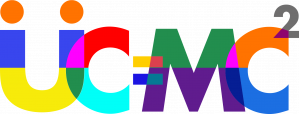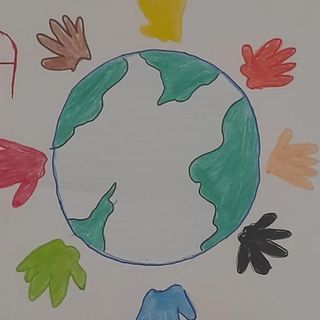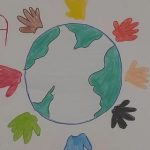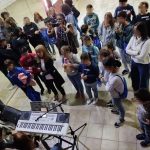osf
What did you do to try to achieve change?
We wanted to inform children about their rights through the Child Guarantee and to support them to actively participate in making changes in all parts of their lives in ways they think is the most important to them, especially in terms of alternative care.
What has changed?
They are more aware of their rights, the importance of actively participating in making decisions for their life and in the politic and democratic sphere, especially when it comes to growing up in alternative care.
They assessed their needs and the changes they need to make to meet those needs, according to the Child Guarantee.
We plan to make relevant documents of all their inputs and send it to stakeholders and decision makers, and also to continue to encourage them to be active about that on social media.
-
osf
What did we do? The aim of our project was to give voice, space, mentoring to children in alternative care and to engage them in active participation for their rights. When? June to December 2022 Where ? The city's of Crikvenica and Zagreb, in Croatia and online. How did you connect with children? We connected though an organization called Forum for quality foster care for children with whom we worked with before. They are a network of foster care NGOs from all across Croatia, so under their umbrella they have a lot of foster children and parents who want to be involved in different activities. How did children identify issues and choose priorities and ways of working together? They are all from same background and live in foster families and they are similar age, so they had similar issues such as living care, so for them it was easy to find same priorities for working together and making a project. How did you investigate children’s views? We did it by organizing and hosting participation groups in which we encouraged them to think about children’s rights, with the focus on meeting those rights in the context of alternative care. We also invited them to create posters, drawings and to be creative in expressing those rights. How did you take action based on what children said? We asked them in which way they would want/need to take action and they all agreed to put it online, especially on the social network Instagram. They created an Instagram page - www.instagram.com/organizacija.za.mlade/ - and put some content on it independently, but we also agreed to pursue that Instagram page furthermore and to transform it into a platform. www.instagram.com/organizacija.za.mlade/ That platform can be a source of all the beneficial information for the other children living in alternative care, but also to everyone else interested in the theme. Also, they expressed that they would love to give their input to other relevant stakeholders, especially the Government but though the work of our organization. What worked well? Quality of preparation for the participation group, their motivation and activation in group. What challenges did you face? In preparation level it was challenging to find right participants who are willing to actively participate in all project levels and they are motivated to be involved in different types of activities. How did you overcome any of the challenges? We searched for a long time for participants, and also put a lot of effort into informing them and preparing them for our expectations, expected input of them and about project goal and planned activities. What would you do differently? Maybe it would be interesting to include some other children from other institutions for alternative care to have different perspective and more points of view of children rights in term of alternative care. For more information contact: Petra Hrvoj by email at: info@fice.hr Instagram: www.instagram.com/organizacija.za.mlade/ -
osf
What advice would you give to other people running participatory projects with and for children? We would definitely encourage other organization that work with children from alternative care in similar projects, because as vulnerable as the generic population of children are in today’s world, the population of children living in alternative care is even more vulnerable. Faced with adversity from a young age, they seek support, safe space and a way to be seen and heard. Often mistreated from their biological families, they also get mistreated from the system they are a part of. Us, as organizations with a high level of motivation and dedication can be the ones who fill the void and help them to achieve their full potential. We can do that in different ways: creative workshops, educational activities, participation groups, counselling etc., depending on the needs of the individuals in front of us. There are a couple of characteristics to take into consideration when deciding which to choose, but it is always important to put the children’s needs and suggestions into consideration when planning, so that we can all together achieve the ultimate results. Why did your project work well? Our project worked well because we included our children in every part and every form of the activities. We encouraged them to actively participate in the project activities, but also in life in general on the topics that are close and familiar to them. We presented them with the idea of being “experts by experience” and with the idea to share that experience with us, but also with everyone else. We connected that with the process of empowerment of our participants which in the end resulted in forming their own ideas and a higher level of willingness to participate in democratic life and their own communities.




